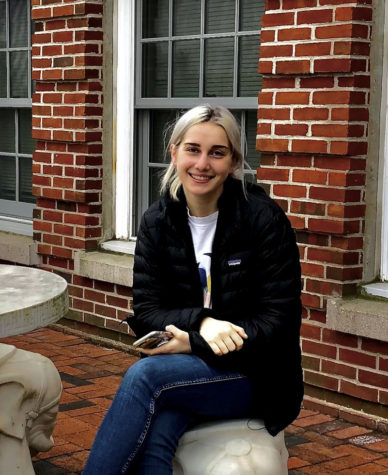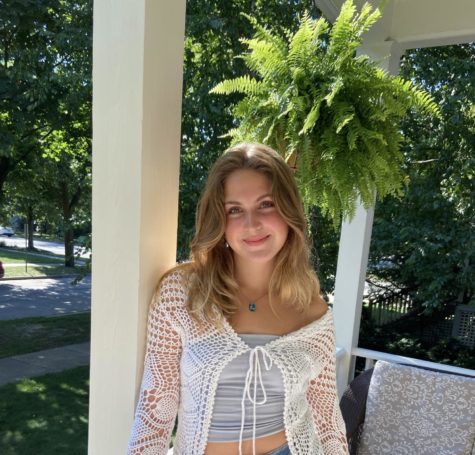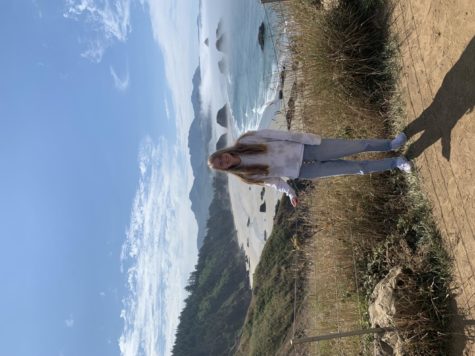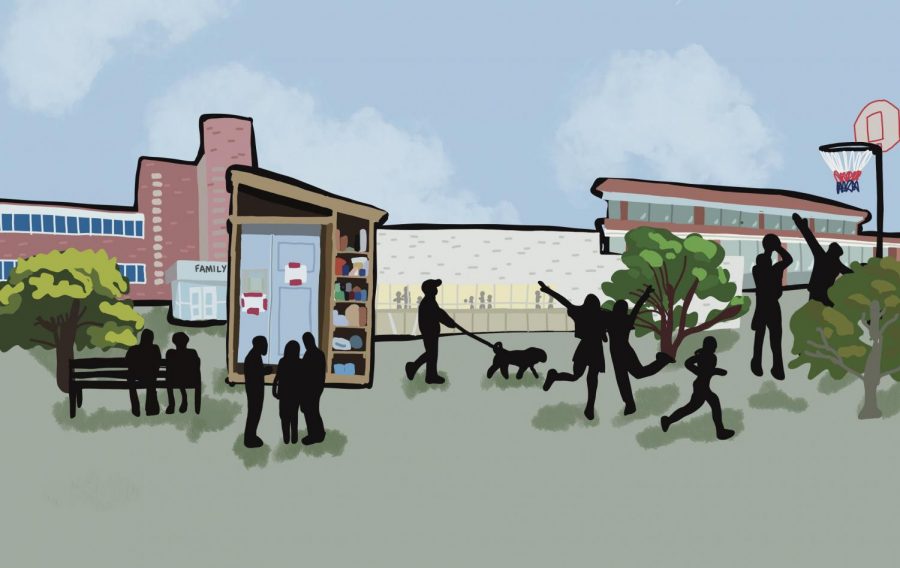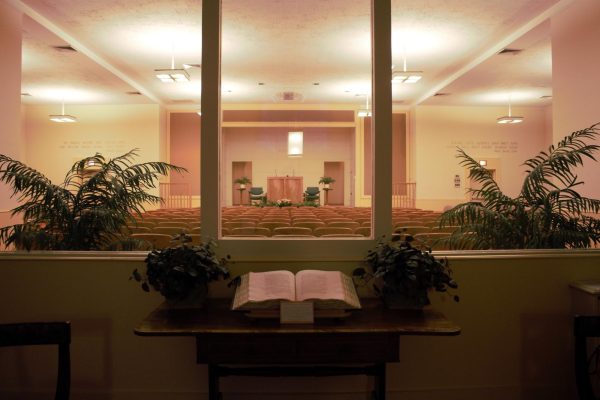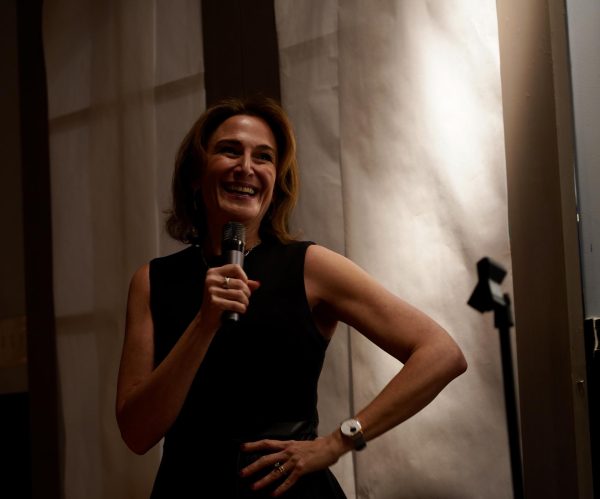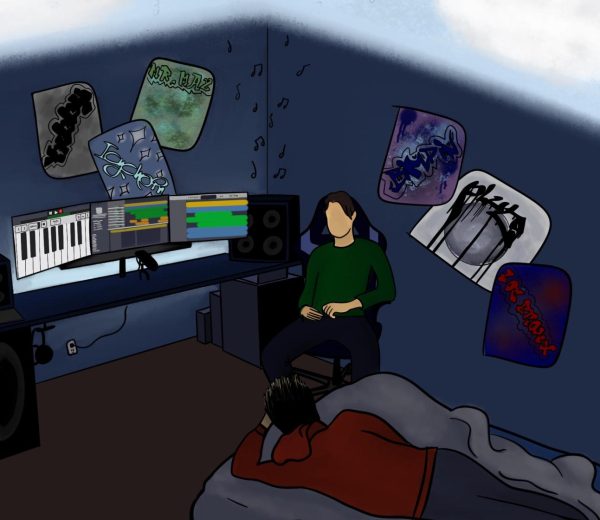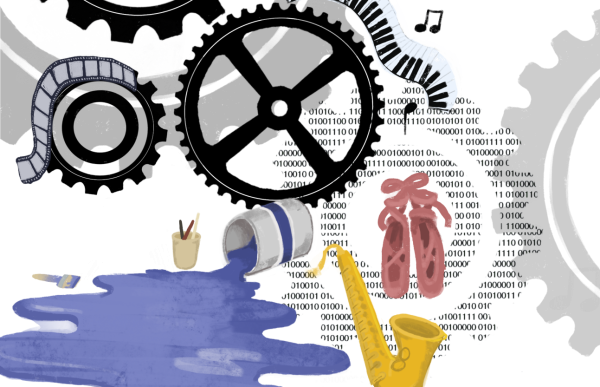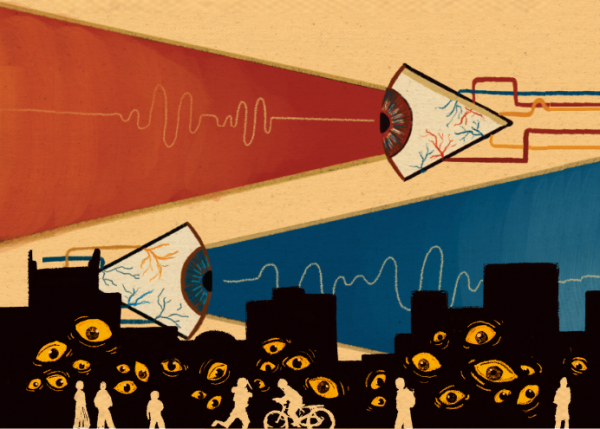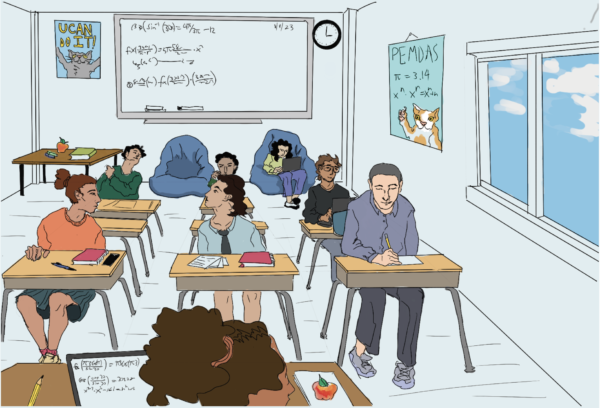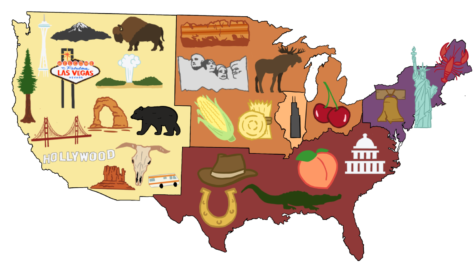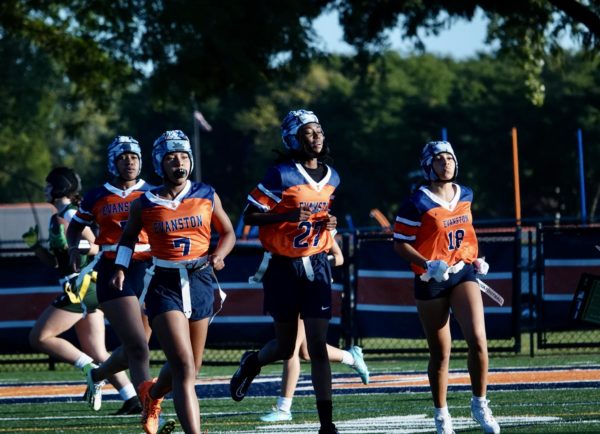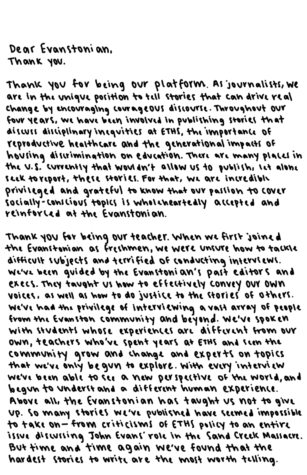Two vital components of the Evanston community begin to rebuild
The COVID-19 pandemic radically shifted the way the commercial and the social services sectors in Evanston operate, as each innovated amid the turmoil.
Evanston’s business landscape starts its recovery
COVID-19 devastated individuals in an extensive amount of ways that would be impossible to exhaust. Responsible for over a year of mortality, isolation and stress, the pandemic has not only impacted human lives but the state of the country’s economy as well.
According to Forbes, the U.S. economy experienced its worst condition since the Great Depression. Emulating the nation, Evanston’s economy took a substantial hit as well.
“Anyone who drives through [Evanston] can see the devastating effects that the pandemic has had in terms of store closings,” explains 1st Ward Alderperson Clare Kelly. “[Evanston’s] been hugely impacted by the pandemic—by the lack of clientele and customers during the long haul of COVID-19. We still have a lot of empty storefronts, stores and small businesses that are still struggling to recover.”
Kelly oversees the downtown portion of Evanston which encompasses the majority of the 1st Ward: an area on which COVID-19 had a particularly detrimental impact. As a result of ever-changing public health guidelines, downtown businesses have had to refashion their policies and strategies numerous times over the course of the pandemic. While seemingly frustrating to business owners, this indefinite business structure also provides the opportunity to absorb a valuable lesson of persistence that might not have presented itself in past years.
“We really had to keep reinventing our business model over and over to suit whatever the conditions were at any given moment, and I think that the people who were able to do that learned a kind of resilience that isn’t necessarily part of a business mindset,” Nina Barrett, owner of the downtown Evanston bookstore Bookends & Beginnings, recalls. “People talk about making business plans, and we all did have a business plan, but this upset everybody’s plans. It was a huge challenge just to learn that.”
Although COVID-19 introduced monumental hardships for downtown Evanston, there was already work to be done to this area prior to the pandemic. Brick and mortar businesses had encountered online consumption as an obstacle before the pandemic, which has only worsened with stay-at-home policies.
“There was a pre-existing layer of damage that was already in progress to the retail businesses of Evanston, which I think has a lot to do with online shopping, and specifically with Amazon. It’s gotten a lot harder for a brick and mortar retail business to just sell enough stuff to pay [for] a commercial rent anymore,” Barrett describes.
A common theme that can be taken from both of these challenges—COVID-19 and virtual shopping—is the significance of patronizing local establishments, but why is this practice important? Barrett explains why the method of shopping locally holds value to her.
“I think that when you shop locally, a much bigger portion of your dollar is going to remain in the local community, and you are paying local taxes that also support your local community. You’re also basically voting to physically create the kind of landscape that you want to see when you go downtown… You want a downtown that’s interesting, where there are fun and interesting stories and where you [can] go in [and] have these very personal interactions with people.”
Although many businesses took such a hard hit during the pandemic, many Evanston residents have learned more about the value of shopping small and locally in order to sustain a flourishing community. With this newfound knowledge, and a possible ending to the pandemic in sight, comes hope for the future of Evanston and its downtown.
“I think the most challenging aspect, but also the most exciting, will be restoring and revitalizing our downtown in the sense that storefronts are no longer closed. I’ve created a retail committee to look at really attracting retail that will attract people to Evanston and really make our downtown a destination. I think that will be the most challenging [act] … developing retail downtown and making it an attractive destination for folks to come to shop,” Kelly explains.
The resilience that surviving Evanston business owners have shown throughout this pandemic helps ensure a sense of hope for the community. Despite the hardships and setbacks businesses, such as Bookends & Beginnings, have faced, there continues to be a positive outlook for the future.
Not only will Evanston and its downtown hopefully be able to build back into what it was before the pandemic, Kelly and others have even greater plans for the future that Evanston has yet to see. There is hope from all ends of the community that small businesses and the entirety of downtown Evanston will be restored to their former glory and improve even further.
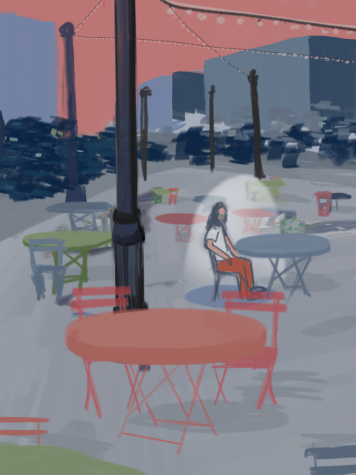
“I think I see [post-pandemic downtown Evanston] vibrant and cultural, so I would love to see more cultural activities happening downtown—Fountain Square with pedestrian areas, surrounding it with art and music events. I think activities such as that, cultural events in the heart of our downtown, will be a huge boost to that business district. I also see us really doing our best to attract businesses that are interesting to people, that are interesting to visit as well as a product . . . I think that the most exciting piece is creating cultural venues downtown as well as a retail experience that’s interesting for people,” Kelly states.
As a community that thrives upon togetherness, Evanston continues to rebuild as it approaches a post-pandemic future. With the combination of resilience from businesses and support from consumers, local establishments will recover.
“It’s also great to see the downtown getting back to its normal capacity with more people eating out and shopping. I think that this is what we have been waiting for for so long, and it is so amazing to see that it is finally, hopefully, almost here,” junior Heath Grossman says.
Many residents believe that Evanston will come out of this pandemic stronger because of the challenges the community has weathered.
“We are trying to rebuild the downtown, rebuild the schools, rebuild ourselves,” junior Moxie Dully says. “And this summer is crucial to allowing Evanston to get back to its normal place while still using what we learned from this pandemic. I have seen a lot of changes even in my neighborhood. People are coming together more now that vaccine rates are increasing, and like I said, people are appreciating socializing and being able to connect with one another, not on Zoom. I think Evanston is succeeding in rebuilding itself for the better.”
For further discussion of the impact the COVID-19 pandemic had on Evanston businesses, listen to this issue’s episode of Kit Chat, found wherever you get your podcasts, in which Booked co-owner Rachel Round dives into the obstacles businesses have had to overcome.
Community uses existing resources for new purposes
From integral community centers shutting down to social distancing measures limiting human connection, the ability to socialize as a community in Evanston has been relatively absent since March of 2020 and is only now starting to return.
“Life-giving community organizations like Fleetwood or Robert Crown help support the varied and immediate needs of the community. Because of this, the temporary closure of these organizations and their programs caused challenges for community members,” Anna Grant-Bolton, a 2021 ETHS graduate, says.
Audrey Thompson, Community Services Manager for the City of Evanston, also recognizes the challenges the centers’ temporary closures have brought for residents— specifically older adults.
“The closing of the centers [last March] impacted all residents because, of course, they couldn’t come to the community centers. . . [Before COVID-19,] you had older adults getting lunch Mondays-Fridays at the Levy Center and then not just getting the food but also coming to be around each other—and they weren’t able to do that anymore,” Thomson says.
Student Services and College and Career Coordinator Llyoandra Cooper is an organizer of the Giving Storeroom located at Family Focus. The storeroom, which was founded prior to the pandemic, had to temporarily close due to COVID-19 like many other community resources. This would have left many Evanstonians without access to food if it weren’t for the strong network of community organizations in Evanston.
“The [Family Focus] building was totally closed; we [were] not able to serve our community. But thankfully, we were able to send them to other places,” Cooper says. “One of the things that I love about being one of the food pantries in Evanston [is that] we have a very good network of other pantries and resources that we can help guide our families to. ”
The Giving Storeroom has since reopened and has found new ways to support its community. Through partnering with another group located in Family Focus, the joint effort of the Giving Storeroom and Valerie D. Summer Clothing Closet is providing two life-giving resources.
“We have been positioned to serve the community and really anyone who is in need. So we offer pairs of non-perishable items and canned goods as well as household items and clothing for those in need, and [it] is simply just an opportunity to give back to those in the community. We are open on Saturdays for a couple of hours, and we allow people to RSVP or they register, rather, to come and take part of the stack in the Giving Storeroom.”
While organizations such as these are helping Evanston residents, the implementation of several welfare initiatives have revived Evanston’s social community by utilizing the Fleetwood-Jourdain, Robert Crown and Levy Community Centers in new ways.
The Safe Summer Initiative, which began June 4, was launched “in an effort to reduce youth violence” through which, “the City of Evanston has partnered with local non-profit organizations and local youth to build enrichment activities this summer specifically tailored for high school youth,” as its website states.
The initiative includes nine organizations that focus on a variety of ages. Community centers are open every day, and, on Mondays and Fridays, there are open gyms and free access to ice skating rinks from 6 p.m. to 9 p.m. From Tuesday to Thursday, Fleetwood is also open from 6 p.m. to 9 p.m.
In order to rebuild as a community, it is necessary that individuals’ needs are met with support where they’ve been historically shut down. With young people’s mental health being exacerbated, in addition to worrying about financial, educational and environmental issues, teens have become particularly vulnerable to COVID-19 not just from a health standpoint. As a result, teens may use negative coping mechanisms to deal with these restrictive circumstances.
The United Nations Office on Drug and Crime articulates this idea in an article that states, “Many of these hardships [of COVID-19] are also known risk factors associated with crime, violence, and drug use, and may expose youth to increased victimization and involvement with crime during and after the pandemic. Such risks, accentuated by confinement and restriction measures, include limited access to education and employment, inequality, stress within families/households, poor mental health and well-being, and loss of social and community networks.”
In order to combat this problem locally, Thompson and other community members discussed how Evanston could target teenagers and adults alike by fostering a sense of community.
“Stemming from a lot of the violence that’s taken place over the last year or so, [the City of Evanston] thought, ‘What can we do?’ and so, we started meeting with our outreach team and members of the Evanston Collective and just said, ‘Hey we need somewhere for young people to go to every day,’ and also a space where we could have block parties on the weekends and some other community events where we can not just target teenagers but also the entire family,” Thompson says.
The initiative alternates between the community centers, with a few events held around Evanston. Teens can choose a variety of activities from open gyms, ice skating, video games with tournaments and prizes, as well as enrichment events, which educate students on financial literacy, etiquette, health, engaging with police and more.
In addition to the utilization of existing places in Evanston, the pandemic has led to the establishment of new community projects, including Evanston Community Fridges. The pandemic heightened the United States’ existing food insecurity crisis. Feeding America released data outlining how the COVID-19 pandemic increased the levels of food insecurity in the U.S, and they projected that the effects of the pandemic will continue through 2021.
“Many people who have been most impacted by the pandemic were food insecure or at risk of food insecurity before COVID-19 and are facing greater hardship since COVID-19,” the report claims.
The Evanston Community Fridge was created in response to national food and supply shortages during the pandemic which directly affected the Evanston community. Grant-Bolton, an organizer of the fridge project, summarizes its concept.
“Evanston Community Fridges are a mutual aid network rooted in collective community care through access to food without cost,” Grant-Bolton says. “We organize fridges hosted within our city to feed one another; taking responsibility for meeting each other’s needs without relying on ineffective institutions to provide nourishment and cultural affirmation.”
The founding of mutual aid organizations was evident during the height of the pandemic. Rather than the top down approach associated with charities, the intention of a mutual aid network is for a community to work together to support itself, independent of an outside source. When a lack of resources was prevalent, the utilization of mutual aid groups became a useful tool.
Following a shooting on Hovland, Thompson and other community members discussed what had gone wrong so far in preventing and responding to violence and what they could do in the future. Thompson talks about how the initiative was created.
“We recognized that our response [prior to the initiative] was pretty poor. Not just from a city standpoint, but from the organizations throughout Evanston, and so we knew that we needed to do something—and so we created an informal response as to when something like this happens, we need to have individuals who are walking the community, who have experienced the after-effects of violence and making sure they are okay. So, just in having those conversations, we started talking about what to do during the summer, because if we didn’t have something during the summer, we’re going to have a long, hot [violent] summer, and we didn’t want that.”
Making the Summer Safe Initiative work as best as it can for teenagers can be attributed to youth involvement and participation in its foundation.
“This initiative is also a part of the Mayor Summer Youth Employment Program, so we actually met with young people to ask them what they wanted [for this initiative]. So instead of creating it for [teenagers], we met with them. And quickly, they told us many of our ideas were trash, and that we needed to revamp; so we did. And that’s why this program is for youth, by youth,” Thomson says. “[When we talked to young people], they didn’t want to feel like our staff was hovering, so we’re trying to create less of a kids camp and more of a teen club feel. They want to have more of a relaxed atmosphere, so we’re trying to balance having a relaxed atmosphere but also providing stability that the center needs and making sure they’re enough adults to supervise if something goes amiss.”
The importance of an organization such as the Summer Safe initiative during
such a tumultuous time is immeasurable. With schools being shut down and community safe havens closed, there was significantly less support and barriers to violence available to young people during the pandemic.
Since in-person activities at the high school were limited, the Moran Center became a place where young people could go to not only learn but safely socialize.
“So we’ve had that activity [with the Moran Center], we’ve had an event about becoming a responsible teen, we’ve had the library come and do STEM activities where teens can make radios and headphones, we’ve had the Institute of Therapy for the Arts come and do some impromptu improv and drama theatre; so we’ve had a wealth of organizations and different activities,” Thompson says. “We also have open gyms where people can play sports and listen to music and, at Robert Crown, youth can ice skate—so really we’ve tried to make it as relaxing as possible; we don’t force young people to participate, but what we’ve done is try to get them to participate.”
Once able to reopen, the reimagining of spaces such as Robert Crown, the Moran Center, Levy Center and Fleetwood-Jourdain allowed for Evanston residents to survive despite facing barriers.
Grant-Bolton concludes that the effectiveness of how communities in Evanston rallied together during the pandemic is an indicator of future growth and development in the city.
“The pandemic caused so much suffering and that can’t be understated,” Grant-Bolton says. “Because of all the change that occurred in the past year, we have an opportunity to radically imagine the year we live in. The pandemic turned the world upside down, but during the next few years, we have the unique possibility to build a more loving, caring community.
“I look forward to seeing more grassroots mutual aid projects to ensure that we are all taken care of.”
Your donation will support the student journalists of the Evanstonian. We are planning a big trip to the Journalism Educators Association conference in Philadelphia in November 2023, and any support will go towards making that trip a reality. Contributions will appear as a charge from SNOSite. Donations are NOT tax-deductible.
